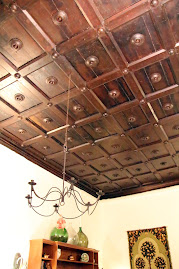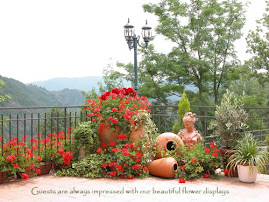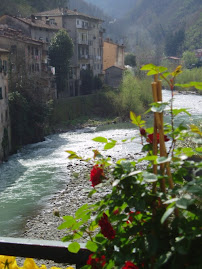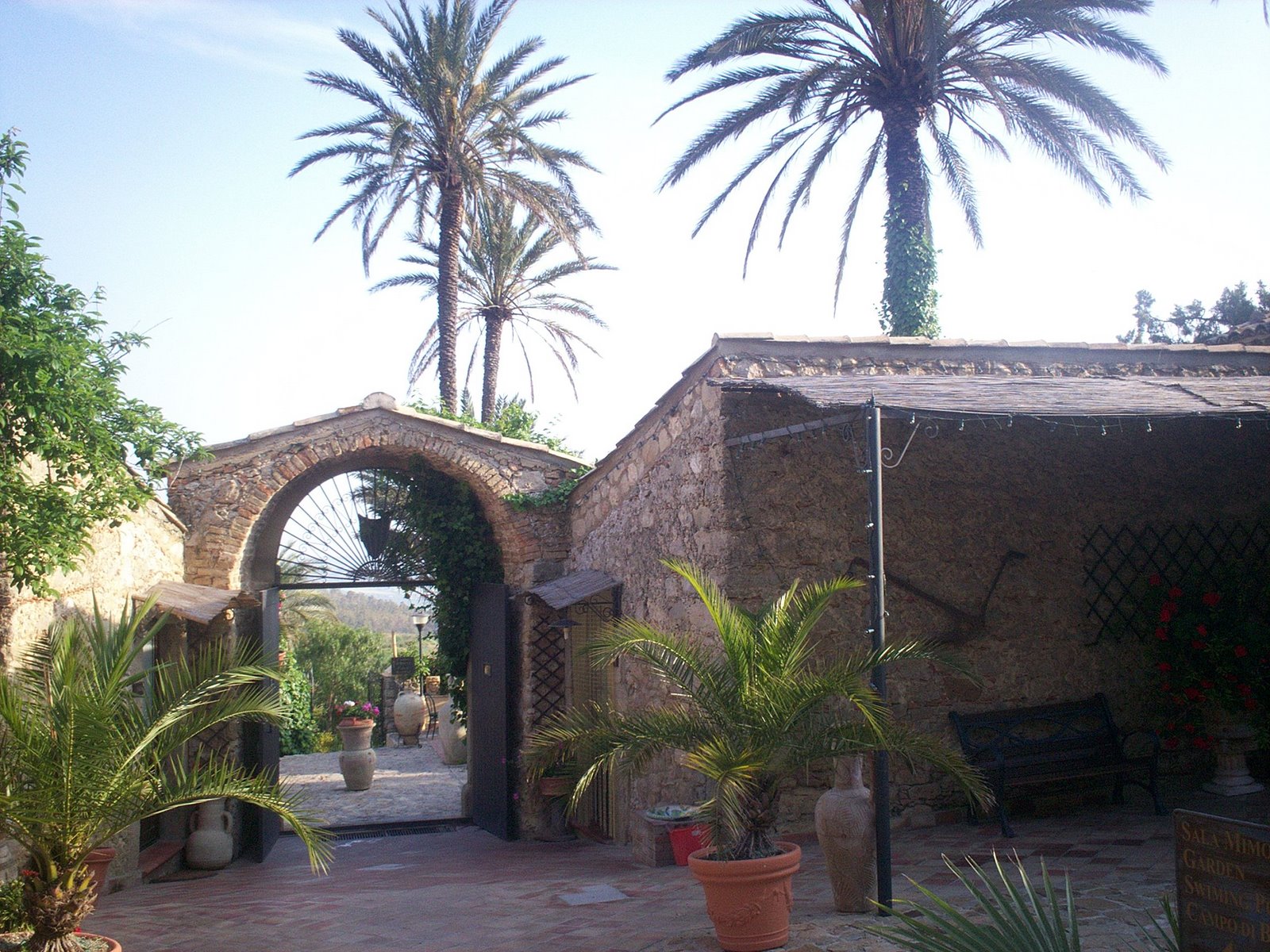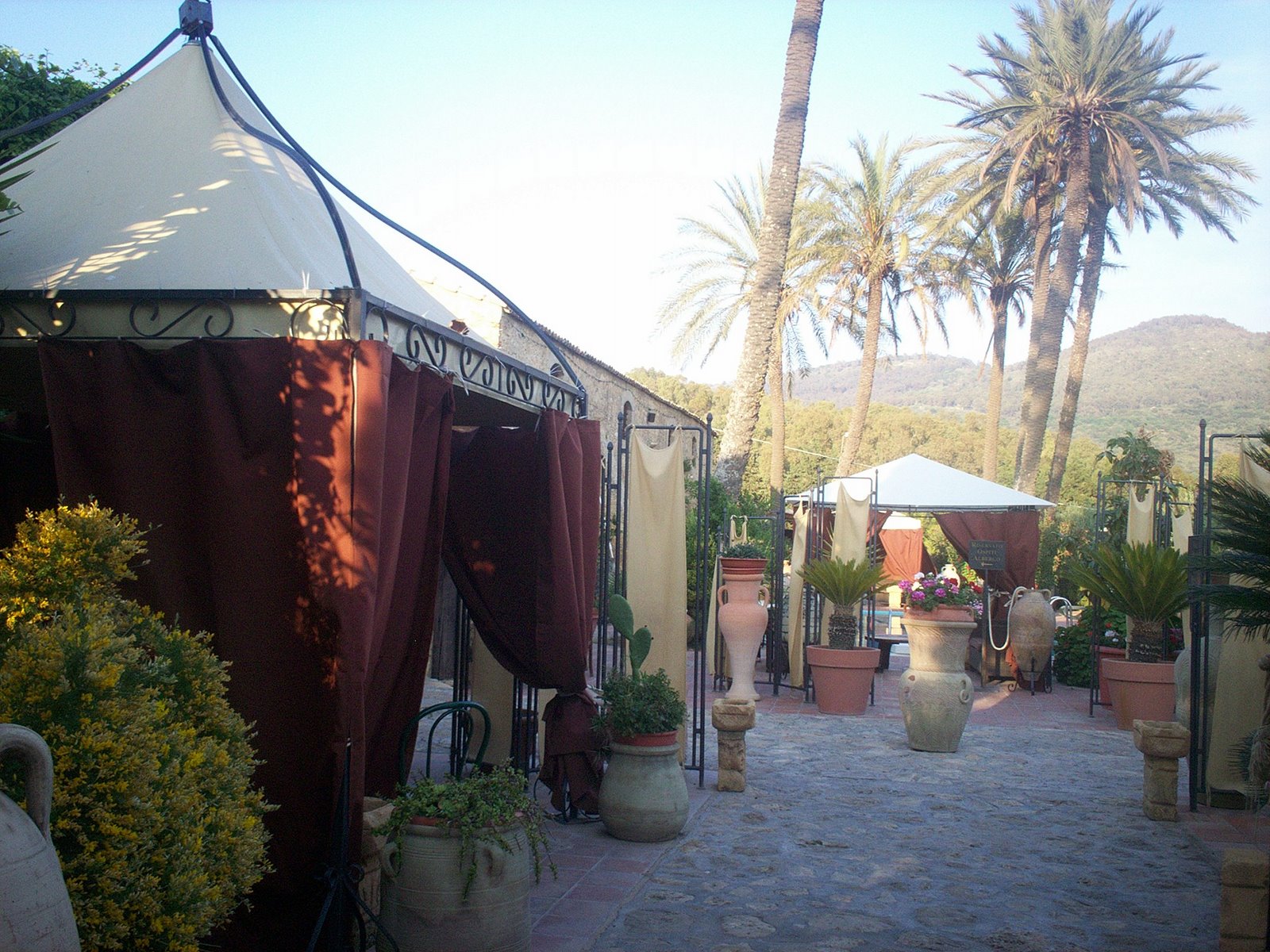One of my favourite sources for all things Tuscan and more.
7 popular day trips from Florence
You’re spoiled for choice
April 20, 2016 - 10:18
Florence
is beautiful, fascinating and packed with artistic treasures, but when
the sun heats up and the crowds accumulate, do like a local and escape
to the more peaceful corners of Italy. There are many popular day trips from Florence,
reachable within an hour or two by public transport. When deciding on
your day destination, where you pick really depends on what you seek.
With nature, the seaside, historical sites and art on Florence’s
doorstep it’s easy to say you’re spoiled for choice. Here are our top
picks.
Fiesole
 A beautiful pic of Fiesole hilltop by Malavoda (Flickr CC)
A beautiful pic of Fiesole hilltop by Malavoda (Flickr CC)
In just a 40-minute bus ride from Florence, (or about a 1.5 hour hike for the adventurous!), travelers can reach the Etruscan town of Fiesole. A welcome retreat into the cool hillside air, olive groves and cypresses, Fiesole boasts unchallenged views of Florence, while also offering plenty of attractions. Arriving by bus places you in Piazza Mino da Fiesole, which occasionally holds markets. From here take a walk up to the Monastery of San Francesco (beware it is a steep street!) to enjoy the views of Florence and have a snack on one of the many available benches. Wander back down the hill and experience the impressive Roman history of Fiesole at the Civic Archeology Museum and related sites: the ruins include an ancient amphitheater, baths and a temple to name a few.
Transport: 40 min by city bus (ATAF)
Fiesole
In just a 40-minute bus ride from Florence, (or about a 1.5 hour hike for the adventurous!), travelers can reach the Etruscan town of Fiesole. A welcome retreat into the cool hillside air, olive groves and cypresses, Fiesole boasts unchallenged views of Florence, while also offering plenty of attractions. Arriving by bus places you in Piazza Mino da Fiesole, which occasionally holds markets. From here take a walk up to the Monastery of San Francesco (beware it is a steep street!) to enjoy the views of Florence and have a snack on one of the many available benches. Wander back down the hill and experience the impressive Roman history of Fiesole at the Civic Archeology Museum and related sites: the ruins include an ancient amphitheater, baths and a temple to name a few.
Transport: 40 min by city bus (ATAF)
Siena
With the entire town centre being a UNESCO world heritage site, Siena is probably the most popular day trip destination for visitors staying in Florence. As the train station is situated outside of Siena’s center, the best option for reaching the city is by bus, which deposits you in the most central location. For most people, Siena is famous for its Palio horse race, which runs in the Piazza del Campo (the fan shaped town square) just two days a year. As it’s very festive and crowded around the Palio, this is to be avoided if you’re aiming for a change of scene from Florence.
Rather, head to Siena in the off-season months and enjoy its magnificent medieval history, impressive 12th century architecture and famous artworks. The city’s cathedral is a masterpiece of medieval architecture. The City Hall (Palazzo Civico) is worth a visit - now a museum, its frescoes are important to the city's civic and religious life - don't miss those by Sienese masters Duccio and Lorenzetti. Save up some energy to climb up the Torre del Mangia, a 400-step climb to the top with panoramic views of the city and the rolling Tuscan hills.
Transport: 1 hour by bus
Orvieto
Although it is a slightly longer trip from Florence than some towns, when approaching Orvieto
this small town manages to impress even from afar. The dramatic hilltop
settlement is perched upon an isolated tuff of volcanic rock, above the
rolling plains of Umbrian vineyards, olive trees and cypress. The jewel
of Orvieto is surely the Duomo di Orvieto. A masterpiece of Italian
Gothic architecture, the elaborate façade, mosaics and Orcagna’s rose
window are worth spending a few hours analysing. But beyond this,
Orvieto also offers a mysterious underground of archeological sites, an
impressive view from the Torre de Moro, an Etruscan Necropolis and more.
For a small town, Orvieto certainly packs a punch. The food is good,
too.
Transport: 2.5 hour by train
 Arezzo's Historic Centre. Picture by Santi.MB Photos (Flickr CC)
Arezzo's Historic Centre. Picture by Santi.MB Photos (Flickr CC)
Not the most typical of tourist hot spots, Arezzo provides its visitors with a refreshing experience, a little off the beaten tourist track. Wandering the streets you’ll be among less tourists and able to enjoy more local people and fan fare. Sitting upon a hilltop just one hour from Florence, Arezzo is a wealthy city, with a rich history of goldsmithery that lives on today. This is reflected in the impressive Duomo, which took almost 700 years to complete. A place that’s played home to many artists and poets over the years, you’ll be treated to an abundance of artworks and architectural masterpieces bundled together in this small town. Not to be missed is Piero della Francesca’s frescoed high altar chapel in the Church of San Francesco and the Romanesque architecture of Pieve di Santa Maria. The Arezzo Antique Fair that runs the first weekend of each month is a very popular and fun destination.
Transport: 1 hour by train
 Viareggio at Twilight. Photo taken by Pistolero79 (Flickr CC)
Viareggio at Twilight. Photo taken by Pistolero79 (Flickr CC)
For travelers lusting after the ocean breeze, a day trip from Florence to Viareggio is the ticket. On the coast of the Tyrrhenian Sea, the sandy beach of Viareggio stretches over 20km and is one of Italy’s traditional seaside resort towns. Providing less of a historical art and culture experience, Viareggio is a place to simply lay back and relax. Beware that for most of the beach you must pay to enter, however this sets you up with deck chairs, umbrellas and access to a convenient bar and restaurant. After a day of beach lazing it’s also nice to take a ‘passeggiata’, the traditional stroll down the boardwalk, a 3km promenade dotted with interesting shops, restaurants and bars to peruse.
Transport: 1.5 – 2 hours by train
 Cathedral in Pienza's Piazza Pio. Photo by stiftunggegenstand (Flickr CC)
Cathedral in Pienza's Piazza Pio. Photo by stiftunggegenstand (Flickr CC)
If you can’t get enough Renaissance in Florence, head Pienza for a more compact visual treat. This hilltop town is a UNESCO world heritage site and was constructed by a 15th century Pope to represent the ideal Renaissance town. 500 years later, we can enjoy the architecture of the Duomo and Palazzo Piccolomini, as well as the garden of the latter, and the incredible view over the Crete Senesi of the former. Getting there takes around 2.5 hours when taking the train from Florence to Chiusi and a public bus from there to Pienza.
Transport: 2.5 hour train ride
 Swimming in the colourful Cinque Terre. Image by katiedee47 (Flickr CC)
Swimming in the colourful Cinque Terre. Image by katiedee47 (Flickr CC)
A popular day trip, though really better for a weekend, the Cinque Terre is about 2 hours from Florence by train and is generally thought to be among the most beautiful stretches of coastline in the world. To get there from Florence, take a train from Florence to La Spezia and from there, the smaller regional train will take you between this area’s famous small towns.
Transport: 2.5 hour by train
Arezzo
Not the most typical of tourist hot spots, Arezzo provides its visitors with a refreshing experience, a little off the beaten tourist track. Wandering the streets you’ll be among less tourists and able to enjoy more local people and fan fare. Sitting upon a hilltop just one hour from Florence, Arezzo is a wealthy city, with a rich history of goldsmithery that lives on today. This is reflected in the impressive Duomo, which took almost 700 years to complete. A place that’s played home to many artists and poets over the years, you’ll be treated to an abundance of artworks and architectural masterpieces bundled together in this small town. Not to be missed is Piero della Francesca’s frescoed high altar chapel in the Church of San Francesco and the Romanesque architecture of Pieve di Santa Maria. The Arezzo Antique Fair that runs the first weekend of each month is a very popular and fun destination.
Transport: 1 hour by train
Viareggio
For travelers lusting after the ocean breeze, a day trip from Florence to Viareggio is the ticket. On the coast of the Tyrrhenian Sea, the sandy beach of Viareggio stretches over 20km and is one of Italy’s traditional seaside resort towns. Providing less of a historical art and culture experience, Viareggio is a place to simply lay back and relax. Beware that for most of the beach you must pay to enter, however this sets you up with deck chairs, umbrellas and access to a convenient bar and restaurant. After a day of beach lazing it’s also nice to take a ‘passeggiata’, the traditional stroll down the boardwalk, a 3km promenade dotted with interesting shops, restaurants and bars to peruse.
Transport: 1.5 – 2 hours by train
Pienza
If you can’t get enough Renaissance in Florence, head Pienza for a more compact visual treat. This hilltop town is a UNESCO world heritage site and was constructed by a 15th century Pope to represent the ideal Renaissance town. 500 years later, we can enjoy the architecture of the Duomo and Palazzo Piccolomini, as well as the garden of the latter, and the incredible view over the Crete Senesi of the former. Getting there takes around 2.5 hours when taking the train from Florence to Chiusi and a public bus from there to Pienza.
Transport: 2.5 hour train ride
Cinque Terre
A popular day trip, though really better for a weekend, the Cinque Terre is about 2 hours from Florence by train and is generally thought to be among the most beautiful stretches of coastline in the world. To get there from Florence, take a train from Florence to La Spezia and from there, the smaller regional train will take you between this area’s famous small towns.
The
perfect Cinque Terre day trip starts in Riomaggiore, the first village.
Leaving here walk the ‘Way of Love’, a path connecting Riomaggiore to
the second village of Manarola, where the seafront is a famous vision of
the Cinque Terre. Note this path may currently be closed for
maintenance but you can still reach Manarola by train. Carry on to
Corniglia, the village at the highest altitude, and onto Vernazza,
touted by many as the most beautiful of the villages. While here,
indulge in dining at the local restaurants where the irresistible fresh
catch of the day is always on the menu. Finish your day trip in
Monterosso, the largest village, where plummeting cliffs give way to a
large beachfront. If rushing through all villages in a day does not take
your fancy, take the train to any one of the villages (although
Vernazza is certainly a top pick) and simply spend the day wandering
winding paths up to the cliff tops for views along the coast and down to
the marina to watch the fishing boats, take a dive in the water and
explore the shops and restaurants.
Transport: 2 - 2.5 hours by train
To plan your route for any of these destinations, log on to GoEuro and searching on the travel database. Wherever you choose to go, there should be plenty of options, so we suggest shopping around for the fastest and cheapest routes.
Transport: 2 - 2.5 hours by train
To plan your route for any of these destinations, log on to GoEuro and searching on the travel database. Wherever you choose to go, there should be plenty of options, so we suggest shopping around for the fastest and cheapest routes.









